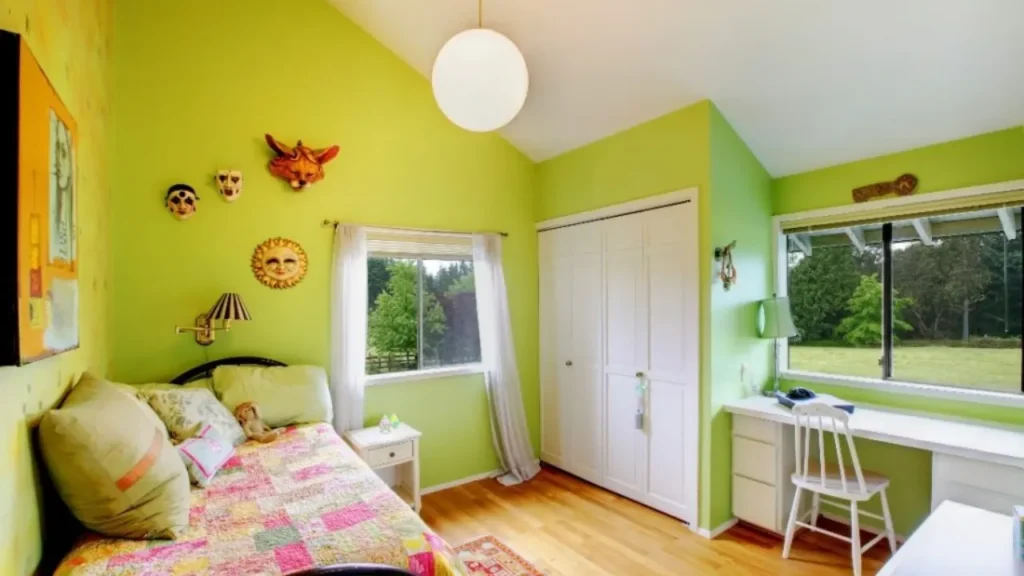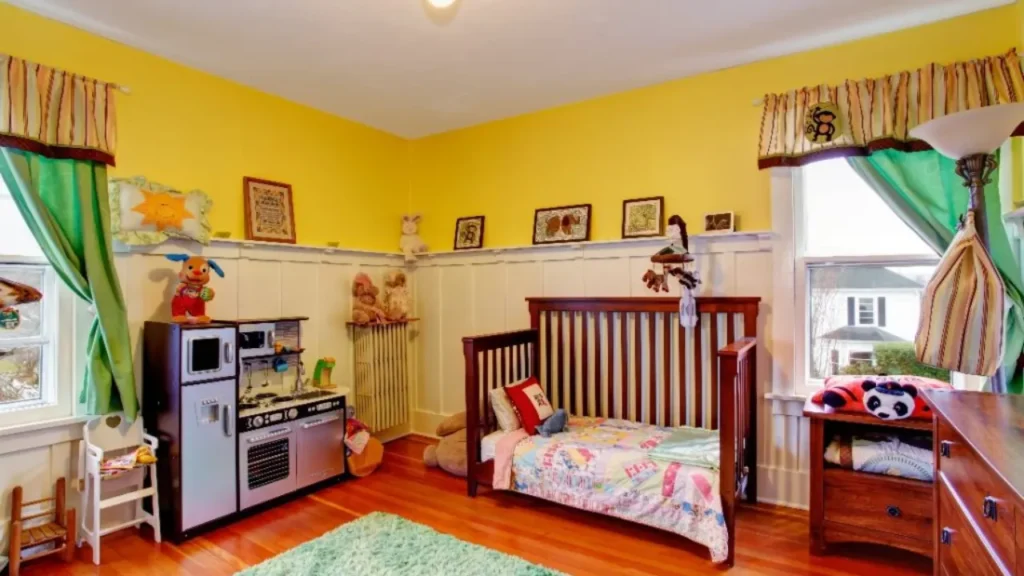Best paint for kids 2025: Designing a kid’s room is all about finding the right balance between fun, functionality, and safety. One of the most important decisions you’ll make in this process is choosing the right type of paint.
Durable, washable, and safe paint can transform an ordinary room into a happy, creative haven for your little one. This guide will tell you everything you need to know to choose the best paint for the job.
Why is Durable Paint Important for Kids’ Rooms?
Kids’ rooms endure more wear and tear than any other room in the house. From artistic endeavors that go beyond the boundaries of paper to the inevitable spills and splashes, walls can take a toll. Here’s why durable paint is a must:

- Easy of cleaning: Look for paints that can be easily cleaned without damaging the walls.
- Stain resistance: This is very important for quickly cleaning up a mess without leaving any marks.
- Safety: Choose paints that are low in VOCs and free of harmful chemicals to ensure a safe environment for children..
“In a survey of over 200 parents, 70% said their children spend an average of 8-20 hours a day indoors*. But that’s where invisible dangers like bad air, chemicals, and allergens lurk. In fact, there are germs on every surface – even the most harmless-looking ones.”
Choosing the Right Type of Best Paint for Kids

- Latex paints: These paints are best suited for kids’ rooms as they are durable and easy to maintain. They dry faster and have a less pungent odor than oil-based paints, making them ideal for quick repairs.
- Zero-VOC formula: These paints minimize exposure to harmful chemicals, which is important for maintaining indoor air quality and protecting children’s health.
- Satin or semi-gloss finish: These finishes are not only aesthetically versatile, but their smooth surface also makes them easier to clean than matte finishes.
And if you think you could benefit from some more tips on how to design a room your kids will love, here are some color options you can choose from.
1. Soft Pink
For this bedroom, modern, sculptural pieces have been selected that strike a careful balance between playful and adult. The soft pink walls contrast nicely with the upholstered headboard.
2. Vivid Green
Less traditional than your typical navy hue, this eye-catching green also looks great with shades of blue, red, grey, black and even wood, making it the perfect color for a bedroom that can easily evolve with its inhabitants.
3. Gray
If you like the idea of a neutral gray color, consider making it a little more interesting by adding a textured element like shiplap to one or more walls. Add playful accents like what was done in this room.
4. Blue-Gray
Gray may not seem like a very fun color to use in a child’s room, but a shade of blue, like in this room by a designer, can make it more appealing. This shade is the perfect backdrop for bright furniture and accessories.
5. Bright Pink
This designer-designed little girl’s room is full of fun things, but the bright pink wall really makes this an exciting place to spend time.
How to Paint a Child’s Room?
- Prepare the room: Make sure the room is well ventilated. Move furniture away from walls and cover it with drop cloths. Use painter’s tape to protect windows, door frames, and baseboards.
- Prime the walls: Primer is very important, especially if you are changing the color of the wall a lot. Primer provides a smooth base for your topcoat and ensures better adhesion and true color.
- Painting: When painting, use rollers for large, flat areas and brushes to cut in around corners and edges. Apply at least two coats for even coverage, allowing adequate drying time between coats.




